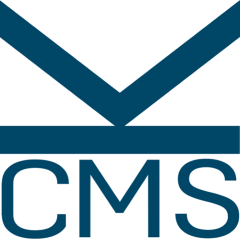Technical System and Technical System Type
Overview
The Technical System module manages the definition, classification, and responsibilities of technical systems within a project (e.g., HVAC, Fire Alarm, Lighting). The Technical System Type serves as a template for creating multiple technical systems with shared attributes and responsibilities. Both modules support rich classification, assignment of responsibilities, and integration with related processes such as Requests for Information (RFI), Risk Analysis, and Design Reviews.
Key Concepts
Technical System: Represents a specific technical system in a project, with detailed classification and responsibility tracking.
Technical System Type: A template defining standard attributes and responsibilities for a group of technical systems.
Responsibilities: Tasks and phases assigned to each system, covering both pre-execution and execution phases.
Classification: Multi-level classification based on external standards, supporting filtering and reporting.
Integration: Direct links to related RFIs, Risk Analyses, and Design Reviews for comprehensive project management.
Main Pages
1. Technical Systems List
Purpose: View, filter, and manage all technical systems in the project.
Key Fields:
Code: Unique identifier for the technical system.
Construction Entity Code: Links the system to a construction entity.
Classification Term Lookup: Classification system term.
Description/Translation: System description and translation.
Serial No.: Serial number for the system.
Level 1–4: Multi-level classification codes (only Level 1 and 2 are visible by default).
Responsibilities: Key responsibility fields for both pre-execution and execution phases.
2. Technical System Card
Purpose: View and edit details of a single technical system.
Sections:
General: Main details, classification, and links to the technical system type.
Classification Identifiers: Unique identifiers for type, function, location, and multi-level classification.
Responsibilities Description: Rich text editor for detailed responsibility notes.
System Responsibilities (Pre-Execution/Execution): Fields for tracking responsibilities across project phases.
Old Responsibilities: Legacy fields for historical tracking.
Subpages: Integration with component usage, building zones, and floor lines.
FactBoxes: Attached documents and system description text.
Actions:
System Description Text: Edit the system description in a rich text editor.
Technical System Report: Generate a report for the current system.
Request for Information: Open or create RFIs related to this system.
Risk Analysis: Open or create risk analyses related to this system.
Design Review: Open or create design reviews related to this system.
3. Technical System Types List & Card
Purpose: Manage templates for technical systems, including classification, responsibilities, and assignment.
Key Features:
Assign Responsibilities: Batch-assign responsibility fields to multiple system types.
Create Instances: Generate technical system records from a type.
Classification: Multi-level classification and identifiers.
Responsibilities: Same structure as for individual systems, supporting both pre-execution and execution phases.
Integration: Actions for RFI, Risk Analysis, and Design Review, similar to the Technical System Card.
How to Use
Creating a Technical System Type
Go to NOC Technical System Types and select New.
Fill in classification, description, and responsibility fields.
Use the Assign Responsibilities action to batch-assign responsibilities to selected types.
Use the Create Instances action to generate technical systems from the type.
Creating a Technical System
Go to NOC Technical Systems and select New.
Link to a construction entity and a technical system type.
Fill in classification, description, and responsibility fields.
Use the System Description Text action to add detailed notes.
Use the Request for Information, Risk Analysis, and Design Review actions to manage related processes.
Editing Responsibilities
Use the rich text editor for detailed responsibility descriptions.
Update responsibility fields as the project progresses through pre-execution and execution phases.
Linking and Integration
Use the provided actions to open or create related RFIs, Risk Analyses, and Design Reviews directly from the system or system type card.
Field Descriptions
Field | Description |
|---|---|
Code | Unique identifier for the system or type |
Construction Entity Code | Links to the related construction entity |
Classification Term Lookup | Classification system term |
Serial No. | Serial number for the system or type |
Level 1–4 | Multi-level classification codes |
Classification Identifiers | Unique IDs for type, function, location, and multi-level |
Responsibilities Description | Rich text field for detailed responsibility notes |
Pre-Design Coordination, OPR, BOD, etc. | Responsibility fields for pre-execution and execution phases |
Technical System Type Code | Links a system to its type |
Actions & Integration
System Description Text: Opens a rich text editor for system notes.
Technical System Report: Generates a detailed report.
Request for Information: Opens the RFI list filtered for this system; allows new RFIs to be created.
Risk Analysis: Opens the risk analysis list filtered for this system; allows new risk analyses to be created.
Design Review: Opens the design review list filtered for this system; allows new reviews to be created.
Tips
Use the Assign Responsibilities action to efficiently update multiple system types.
Use the Create Instances action to quickly generate systems from a template.
Use the classification fields and identifiers for advanced filtering and reporting.
Attach documents and use the system description text for comprehensive documentation.
Security & Permissions
Only users with appropriate permissions can create, edit, or assign technical systems and types.
Assignment fields are validated against user and agent tables.
Troubleshooting
If you cannot see or edit a system or type, check your permissions and assignment.
If classification or responsibility fields are missing, ensure the correct type is selected.
